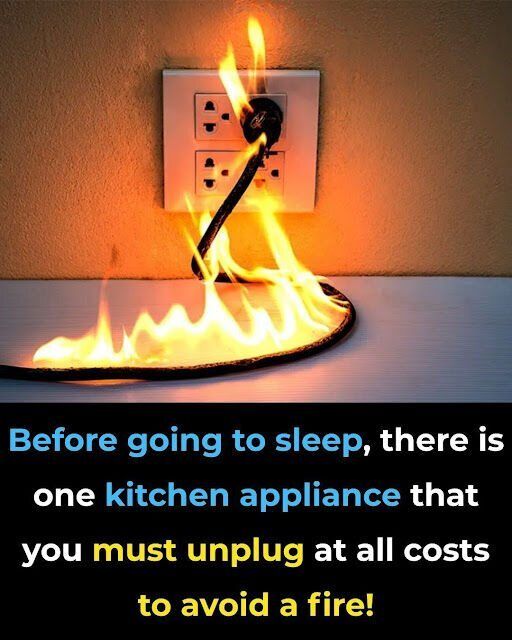Many households look for simple ways to lower utility costs and keep their homes as safe as possible, especially as energy prices rise and appliances become more complex. One of the easiest habits you can build is unplugging certain devices once you’re done using them. It may sound small, but for many appliances, it truly makes a difference.
Even when turned off, a surprising number of electronics continue drawing electricity. This quiet drain on power—often called standby or “phantom” energy—can add up. For many U.S. households, it can mean an extra $100 to $200 on the yearly electric bill. Beyond cost, some appliances can pose a safety concern if left plugged in for long periods, especially those that heat up or operate with older wiring.
To help reduce unnecessary energy use and protect your home, experts recommend unplugging the following items once you’re done with them.
1. Space Heaters
Space heaters are convenient during colder months, but they require careful attention. Safety organizations note that they are among the most common sources of winter home fires, often because they are left too close to bedding, curtains, or furniture.
Modern heaters may include automatic shutoff features, but no safeguard is perfect. The safest approach is to turn them off and unplug them every time you leave the room and never run them while sleeping.
2. Clothes Dryers
Most people don’t realize that the electrical setup for a clothes dryer can still use a noticeable amount of power even when the appliance isn’t running. This can lead to unnecessary energy costs over the year.
If accessing the dryer’s outlet is inconvenient, consider using a smart power strip. With one switch, it can cut the power completely and prevent wasted energy.
3. Hair Styling Tools
Flat irons, curling wands, and similar tools heat to very high temperatures—hot enough to damage surfaces or nearby items if left unattended. While some models include automatic shutoff features, they cannot always be relied on.
The safest routine is simple: unplug the tool immediately after use and store it in a heat-safe pouch, allowing it to cool away from fabrics, paper, or countertop clutter.
4. Toasters and Toaster Ovens
These small kitchen appliances seem harmless, but they can still pose safety risks. A buildup of crumbs can smolder, and in some cases, the lever or heating mechanism can malfunction even when the appliance appears off.
Cleaning the crumb tray regularly and unplugging the toaster or toaster oven after each use helps reduce both fire risk and electrical draw.
Other Everyday Appliances to Keep in Mind
While they may not require unplugging every time, a few everyday devices are worth managing thoughtfully:
• Phone chargers: They use little power but should be unplugged during storms or when not actively charging.
• Televisions and game systems: Many continue drawing energy while in standby mode. A power strip with an on–off switch can help.
• Coffee makers: If your model doesn’t have an automatic shutoff, unplugging it is a smart precaution.
• Microwaves: Generally safe to keep plugged in; their standby energy use is very small.
Tips to Build Safer Habits
Creating a routine around unplugging appliances doesn’t need to be difficult. A few small adjustments can make it second nature:
• Use smart power strips for home offices, entertainment centers, and areas with multiple electronics.
• Label power cords as reminders, especially for seasonal items.
• Make it a habit to unplug heat-producing tools immediately after storing them or before leaving a room.
Unplugging the right appliances is more than a safety measure—it’s a simple way to protect your home, reduce energy bills, and enjoy peace of mind. You don’t need to disconnect every device you own, but being mindful of the ones that use the most energy or produce heat can make a meaningful difference.
Your home supports you every day. These small steps help you support it just as thoughtfully.
